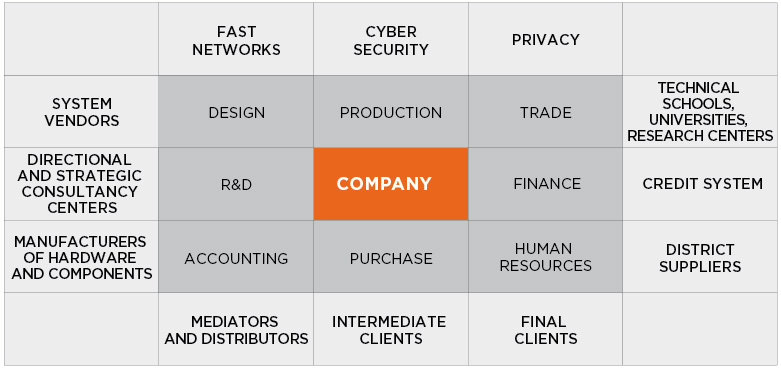
Who will produce the change 4.0?
7 December 2017Who is the innovation specialist today, how is he formed and how does he work in a contemporary company? Flaviano Celaschi, Scientific Director of the Executive Master in Business Innovation Design of BBS and Professor of Industrial Design at the University of Bologna, provides us an accurate point of view on the key figures of the 4.0 transformation currently under way in companies and society at large.
A partial view
Which specialists do I need? Asks himself the entrepreneur. It’s an e-leadership problem, says economic management literature. It is a problem of choice of technologies, the engineers say; it is a software and personalization problem, IT specialists say; it is a problem of soft skills and resilience of internal people, human resources experts say; it is a problem of choice of suppliers warns the purchasing manager.
Each function tends to observe the Industry 4.0 phenomenon from its point of view, as often happens in universities, where knowledge is segmented by disciplines and students are “mentalized” to look at business phenomena through specific lenses, frequently very precise and specialized. We risk losing sight of the whole and the lack of models of reference and the youth of the few experiences developed so far, do not favor clarity.
The model of the double change in progress
The project comes to life from the construction of a model of the production reality crossed by the Industry 4.0 phenomenon in which it is clear that the new “playing field” of the company is not so much the challenge of integration between manufacturing and digital (vertical axis of the system), but at the same time the breaking of the embankment that has so far separated the mentality, the problems and the opportunities of the B2B world from the B2C one.
The same enabling technologies that favor the integration between material and dematerialized bring the fundamental good of information in the form of data, from the moment of final use backwards, towards the production chain to the producer who interpreting data in real time and changing them in knowledge, re-transforms them into added value towards the end customer. All that is where the product or service is used is at the same time where it is produced.
From suppliers to a partners of a system
The digital revolution is not a private matter that can be closed in the contemporary enterprise. Around it there is a multitude of actors without which no single company can make it. The innovation that we pursue is a choral fact and within the company it is necessary to possess or train and update operators able to deal with it. What is very important to have becomes the internal figure who is able to stand out and interpret in a personalized and temperate way to a large number of these actors: knowing what to ask, how to filter the input, how to judge the service or the product obtained, and how to orchestrate its energies.
There are 4 sides of the system: that of system vendors (for example: Oracle, SAP, Siemens, ABB, CISCO, etc.) often large globalized manufacturers offering relatively closed and standardized solutions. Directional and strategic consultancy centers (such as KPMG, Accenture, etc.) that propose substantial packages of man-days of consultancy that must meet in the enterprise subjects able to absorb the proposed knowledge and strategies. There are the producers of technological components and machines (Kuka, Comau, Siemens, etc.), which often supply substantial hardware but which must absolutely dialogue with the existing one. Then, from another side of the system there are the partners who can solve three conditioning problems: the provision of fast networks, cyber security, privacy, certainty without any investment is founded on the sand.
There is an ecosystem of actors that can create conditions of practice and connection that are sufficiently fast and pragmatic with a quantity of elements that are not in any way available within the enterprise itself: technical schools, universities, research centers, PP.AA., the district’s reliable suppliers, banks and credit facilities. Finally there is the market in which a bulky novelty stands out: in addition to brokers and distributors and traditional customers comes into play the customer of the customer we serve, ie it becomes essential to often override our customer and go to understand the level of satisfaction and need that is downstream, because the size and the characteristic laziness or inability of our client could turn into Industry 4.0 in a disaster for us.
The design mediator between knowledge and interests
Within the company the traditional functions in which our organization has been articulated for some time may today find itself in a crisis while facing change, because there is an ambivalent sense of inadequacy: on the one hand, the fear that a reorganization of the product and the service can make lose positions of control of one function over the others, while on the other side it may emerge that a function takes over the e-leadership by underestimating the chorality that becomes necessary to react in a balanced way to the organizational change.
It is difficult to understand the importance of design which must be understood here at two different levels:
• the level of the specific function from which all the other functions of the organization start, especially if we mean both the process design and the product-service design;
• the transversal rate of absorption of each internal function with the cultures of design and design thinking, demonstrated by the role that new design functions have assumed in the first 250 global companies by revenue, many of which only 20 years ago did not exist.
Innovation specialists exist, and do not have an easy life, nor a specific internal role of belonging (economists, management, engineers, traders, etc.). There are 3 pillars that make up the difficult balance of e-leadership:
• knowledge of the potential and characteristics of enabling technologies and their integration;
• the management of change and innovation;
• the management and strengthening of the individual and collective human factor;
• design driven approaches to innovation.
These specialists can be trained integrating academic knowledge and managerial operations, case studies and testimonies, real-time design and comparison. Bologna Business School proposes the Executive Master in Business Innovation Design, a path dedicated to managers, entrepreneurs and consultants who want to transform the opportunities related to innovation in business objectives.

